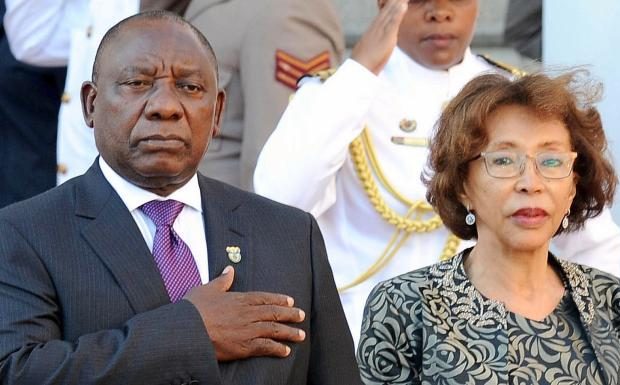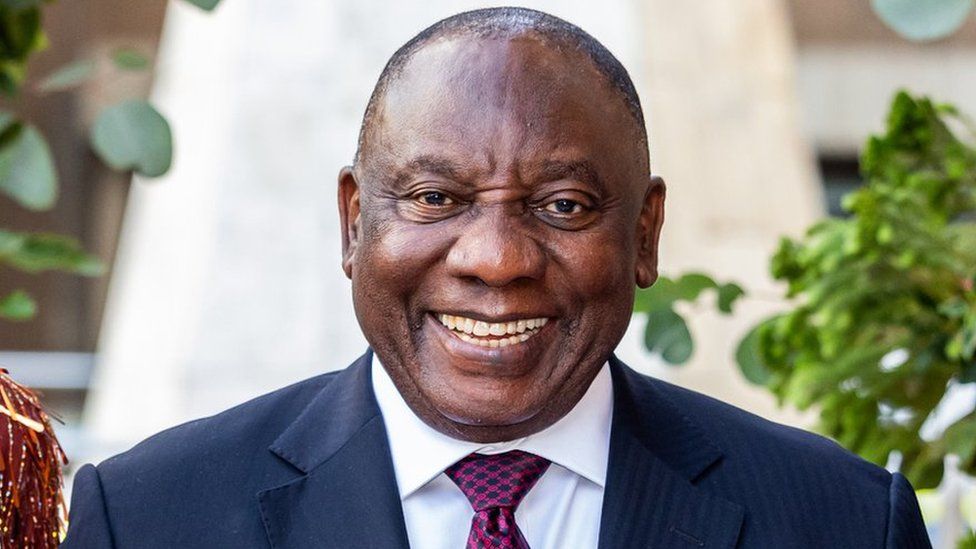| QUICK FACTS | |
| Birth Name: | Matamela Cyril Ramaphosa |
| Current Position: | President of Republic of South Africa |
| Date of Birth | 17 November 1952 (age [age]19521117[/age] years) |
| Place of Birth | Soweto, Gauteng |
| Nationality: | South African |
| Gender: | Male |
| Wife: | Tshepo Motsepe (m. 1996 – ) |
| Political Party: | African National Congress |
| University: | University of the North (Turfloop) |
Early Life and Education
Matamela Cyril Ramaphosa was born on November 17, 1952, in Soweto, Johannesburg, South Africa. He grew up in the township of Chiawelo, surrounded by the harsh realities of apartheid. His father, Erdmuth Ramaphosa, was a retired police officer, and his mother, Erdmuth, was a homemaker. Despite the oppressive environment, young Cyril was determined to pursue education as a pathway to empowerment.
Ramaphosa attended Tshilidzi Primary School and Sekano Ntoane High School. His academic prowess earned him a place at the University of the North (Turfloop) in Limpopo, where he began studying law in 1972. His time at university was marked by political activism; he became involved in the South African Students’ Organisation (SASO) and the Black People’s Convention (BPC), aligning himself with the anti-apartheid struggle.
Political Activism and Union Leadership
Ramaphosa’s activism led to his arrest in 1974 and detention for eleven months under the Terrorism Act for organizing pro-Frelimo rallies. This experience did not deter him; instead, it solidified his resolve to fight apartheid. After his release, he continued his studies and eventually obtained his B. Proc. degree through the University of South Africa (UNISA) in 1981.
In 1982, Ramaphosa’s career took a significant turn when he was appointed as the first General Secretary of the National Union of Mineworkers (NUM). Under his leadership, the NUM grew to become the largest and most powerful trade union in South Africa. He organized massive strikes, demanding better wages and working conditions for miners, which played a crucial role in weakening the apartheid regime.
Role in the Anti-Apartheid Struggle
Ramaphosa’s prominence as a union leader propelled him into the broader anti-apartheid movement. In 1985, he was instrumental in the formation of the Congress of South African Trade Unions (COSATU), a federation of trade unions that became a pivotal force in the struggle against apartheid. COSATU’s alliance with the African National Congress (ANC) strengthened the liberation movement, and Ramaphosa’s leadership skills were widely recognized.
In 1990, following the unbanning of the ANC and other political organizations, Ramaphosa was appointed head of the ANC’s negotiating team. He played a critical role in the negotiations that led to the dismantling of apartheid and the establishment of a democratic South Africa. His efforts culminated in the signing of the historic interim constitution in 1993.
Political Career and Business Ventures
In 1994, South Africa held its first democratic elections, and Cyril Ramaphosa was elected as a Member of Parliament. He was appointed Chairperson of the Constitutional Assembly, where he oversaw the drafting of the country’s new constitution, which was adopted in 1996. His contributions to the constitution earned him widespread acclaim for his commitment to human rights and democratic principles.
Despite his successful political career, Ramaphosa decided to step away from politics in 1997 to venture into the business world. He founded Shanduka Group, a diversified investment holding company, and served on the boards of several prominent companies, including MTN, Standard Bank, and Lonmin. His business acumen led to significant financial success, and he became one of South Africa’s wealthiest individuals.
Return to Politics and Presidency
Ramaphosa’s hiatus from politics ended in 2012 when he was elected as Deputy President of the ANC. In 2014, he was appointed Deputy President of South Africa by President Jacob Zuma. During his tenure, he focused on economic reforms, job creation, and addressing corruption within the government.
In December 2017, Ramaphosa was elected President of the ANC, positioning him as the likely successor to President Zuma. Following Zuma’s resignation in February 2018, Ramaphosa was sworn in as the President of South Africa. His presidency has been marked by efforts to combat corruption, revitalize the economy, and improve governance.
Achievements and Challenges
As President, Ramaphosa has undertaken significant initiatives to address the country’s challenges. He launched the Economic Reconstruction and Recovery Plan to stimulate economic growth and create jobs. His administration has also prioritized land reform, education, and healthcare.
However, Ramaphosa’s presidency has not been without challenges. He has faced criticism for his handling of the economy, high unemployment rates, and persistent inequality. Additionally, his efforts to tackle corruption have met resistance from within the ANC and other political factions.
Personal Life
Cyril Ramaphosa is married to Dr. Tshepo Motsepe, a medical doctor and businesswoman. The couple has four children.

Dr. Motsepe is the sister of Patrice Motsepe, a billionaire businessman, and Bridgette Radebe, a prominent businesswoman. Despite his busy schedule, Ramaphosa is known for his commitment to family and often speaks about the importance of strong family values.
Legacy
Cyril Ramaphosa’s legacy is still in the making, but his contributions to South Africa’s liberation, democracy, and development are undeniable. From his days as a student activist to his leadership in the labor movement, and now as President, Ramaphosa has dedicated his life to serving his country. His journey reflects resilience, determination, and a deep commitment to justice and equality. As he continues to navigate the complexities of leadership, South Africans and the world watch closely, hopeful for the positive changes his presidency may bring.
